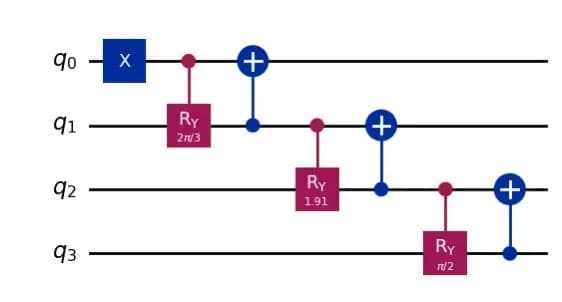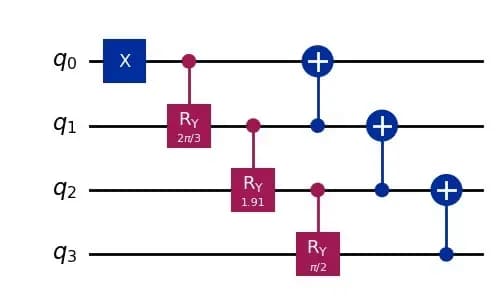Editorial
In the intended solution for problem A4, the depth of the quantum circuit would be , which does not solve this problem. So, how can we improve the quantum circuit?
Let's examine the following example with 4 qubits:

This quantum circuit generates the quantum state . Each quantum gate acts only after all the previous gates have acted, and they cannot act simultaneously.
In this circuit, a controlled gate and a controlled gate are applied consecutively to the same qubit. We should instead consider applying all controlled gates first, followed by the controlled gates.

By doing this, the last controlled gate and the first controlled gate act on different pairs of qubits, allowing them to act simultaneously. As a result, the depth of the quantum circuit improved from 7 to 6.
By generalizing these operation to arbitrary qubits, the depth of the quantum circuit becomes , which satisfies the given constraint.
Sample Code
Below is a sample program:
import math
from qiskit import QuantumCircuit
def solve(n: int) -> QuantumCircuit:
qc = QuantumCircuit(n)
theta = [2 * math.atan(math.sqrt(i)) for i in range(n - 1, 0, -1)]
qc.x(0)
for i in range(n - 1):
qc.cry(theta[i], i, i + 1)
for i in range(n - 1):
qc.cx(i + 1, i)
return qc